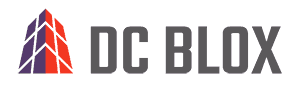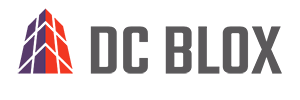
When someone talks about creative hubs, understandably their minds go to the arts like painting, literature and the performing arts. But creative communities are groups of innovators who create businesses that disrupt the status quo with new ways of doing everyday things.
They are entrepreneurs, scientists, developers, user experience designers and the plethora of other highly educated, crazy smart people who want to change the world.
Or at least their small corner of it.
Attracting the Creative Class
These pioneers are the ones who drive both our local and national economies. And cities like Chattanooga, TN are well on their way to becoming a destination for the creative class in the Southeastern United States. They’re doing it the way great cities before them did it by bringing together politicians and the private sector to create what Bruce Katz, the vice president and director of the Brookings Institution’s Metropolitan Policy Program, calls an “innovation district,” which are, “geographic areas where leading-edge anchor institutions and companies cluster and connect with start-ups, business incubators, and accelerators.”
Other “innovation centers” in the U.S. include Midtown Innovation District in Atlanta and Research Triangle Park (RTP) in Raleigh-Durham. These are more than gentrification efforts that redevelop downtown housing and retail areas plagued by urban blight. They are a shift in the way businesses, nonprofits and politicians relate to each other and focus on not just making an area prettier, but making it more economically and culturally viable.
Laying the foundation
Before they began their effort, they found that only 3% of the workers in downtown Chattanooga actually lived there. University of Tennessee Chattanooga (UTC) students had to live outside the city, so there were few regular customers to support new bars and restaurants.
That had to change.
The creative class for the most part doesn’t like to drive. They want to live close to where the social and business “action” is. Chattanooga’s current mayor, Andy Burke, realized this when, in 2013, he embarked on an ambitious plan to make Chattanooga a hub for business growth by creating his own 140-acre downtown innovation center where people live, work and play.
Chattanooga worked with Electric Power Board (EPB) to build a 10-gigabit network of high-speed fiber citywide earning it the nickname, “Gig City.” This system alone helped attract new businesses to the area adding more than $860 million to the local economy according to a 2015 University of Tennessee study.
All work and no play make Jack …
With high-speed bandwidth in place, new businesses that are either technology driven or use technology to run their back office applications (which just about covers every business now), connectivity was now an asset rather than a liability. In addition, the city invested in riverfront parks and downtown cultural institutions. Developers came in and built hotels, apartments and mixed-use retail making the urban area more attractive to both businesses and workers they wanted to attract.
Let’s do launch
Incubators and organizations that support start-ups sprang up. The Chattanooga Chamber of Commerce started INCubator, which is now the largest business incubator in the state of Tennessee, and the third largest in the United States. The Chattanooga Technology Council or CHATECH, founded in 2003 to connect the city’s tech community “through professional education programs, social events, outreach initiatives, peer group forums, and networking opportunities,” found new life. Combining these organizations, an affordable quality of life and a business community that welcomes new people and businesses with open arms, the city’s urban center has gone from a sleepy dead zone eight years ago to a launch pad for amazing new ideas.
Gigtank, an incubator focused on startups that need high bandwidth recently graduated Branch Technology, a company that prints 3D matrices that serve as the internal structure for buildings. It also graduated ArkLabs which created an app that improves water efficiency in residential homes highlighting a long list of app developers that have been created in the area.
The capacity for opportunity
Area data centers were filling up to capacity as more companies—especially technology intensive startups—entered the area. Traditionally, data centers are dark bunkers where technology folks roam with government-style purpose. But DC BLOX saw Chattanooga’s trajectory and wanted to make sure that businesses had all of the advantages that major markets like Atlanta and Dallas had in terms of data center performance.
That’s why we made a $10 million investment in the “platform for the future” and opened our newest DC BLOX data center this September in Chattanooga. Connected to the city’s high-speed fiber, the new Chattanooga data center keeps customers connected to a network of agile data centers with high capacity light speed optical networks close to the Edge.
That means total business continuity — we leverage agile synchronous data to keep business applications running all of the time because your data is replicated across our network that’s connected close to the Edge. Your data is always “live” and current. So, no matter what happens, if one data center goes down during a disaster, customers seamlessly switch to one of our other points to keep operating without sacrificing speed.
Carla Askonas, executive director for CHATECH said recently after visiting DC BLOX’s new Chattanooga data center,
“I was impressed,” she said. “I understand what a data center is supposed to do, but when you see all of the planning that went into it—the modular design, the power duplication, the coolers — it’s all geared for companies who need to perform at a high level. But they’re not all about the technology. They’re very customer-centric. If a customer signs up for data center services, DC BLOX has streamlined the process so that it takes only about 48 hours — not the 10-14 days we’re used to seeing. That’s unusual for this type of business.”
Looking to the future
As we look at what’s happening in Gig City, we can’t help but be excited for where this could go. A new data center that’s close to the Edge means more capacity for more innovative companies.
That just means bigger ideas including regional data storage hubs for Big Data and Internet of Things (IoT) applications like automated transportation, Smart surveillance technology, energy management systems, water distribution solutions and urban security.
Imagine virtual reality technology taking leaps forward by companies headquartered not in Silicon Valley, but in Chattanooga, TN. All of which employ workers who take self-driving vehicles to work because of the local innovations being created on self-autonomous vehicles data hubs.
Some people have observed that Chattanooga is where Austin, TX was 30 years ago. That’s not a bad trajectory. If Chattanooga keeps going down this road, they very well may surpass Austin.
See you in 30 years.
About DC BLOX
DC BLOX is a digital infrastructure provider in the Southeast that delivers integrated data center and fiber network solutions at scale to enable hyperscalers, enterprises, communications providers, and technology companies to offer enhanced digital services to their customers and accelerate the region’s economic growth. DC BLOX’s operating data centers are located in Birmingham, AL; Huntsville, AL; Chattanooga, TN; Greenville, SC; Myrtle Beach, SC, with new developments underway in Conyers, GA, Douglasville, GA, North Augusta, SC and Montgomery, AL. For more information, please visit www.dcblox.com, call +1.877.590.1684, and connect with DC BLOX on X, LinkedIn, Facebook, and Instagram.
Media Contact:
iMiller Public Relations for DC BLOX
Tel: +1.866.307.2510
Email: DCBLOX@imillerpr.com


